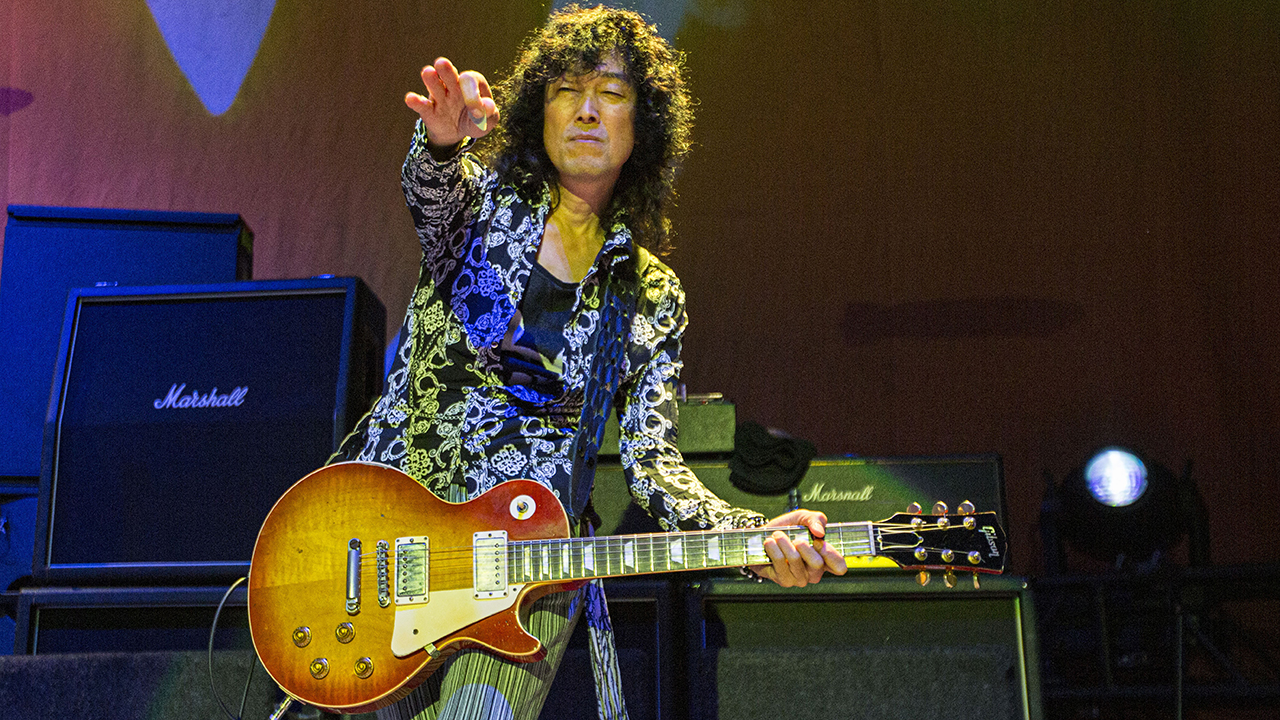
Many of us will understand Akio Sakurai’s devotion to Jimmy Page. At a young age, the future kimono salesman fell in love with music, found a hero and joined the ranks of rock guitarists round the world.
But the Japanese player’s commitment carried him beyond the realm of those who eventually leave their instrument to gather dust: he spun his dream of emulating Page into an odyssey that’s led to him becoming known as Mr. Jimmy.
He truly is the leader of the Page followers – he’s spent three decades transforming himself into a near-mirror image of the Led Zeppelin icon, down to his garb on and off stage. For many of those decades it was a part-time gig for Sakurai, as he performed note-for-note renditions of Page’s licks in Tokyo clubs.
But everything changed 11 years ago, when Page himself caught wind of his act and went to see him. “I asked Jimmy for advice and he replied, ‘You already know me,’” Sakurai says.
“I asked him if it was okay to keep doing what I’d been doing, as I’m aware that some artists don’t like tribute bands. To see someone wearing the same clothes and posing like them… it could be seen as creepy!” But Page, ever the English gentlemen, told him: “Keep doing it,” and hugged Sakurai.
Not too long afterwards, he made a break for the Los Angeles and joined a tribute act, Led Zepagain – and in 2019 he became the subject of a movie that bears his name. “Before the movie Mr. Jimmy was released, many people viewed me as just another guitarist in a tribute band,” he says.
“People thought I was just another fan of Led Zeppelin. But after watching the film, people can rethink what a tribute band is. For me, paying tribute requires a massive amount of respect and love for the original artist, and a strong passion and desire to become that person. You need love to do that.”
He continues, “Jimmy Page’s music is like Mozart – timeless and universally loved by people. No-one tries to change the notes. Beyond the technicality, emotions and expressions are attached to this music, and no one tries to change that. I don’t just play the songs; I play the essence, the emotions and the feelings.”
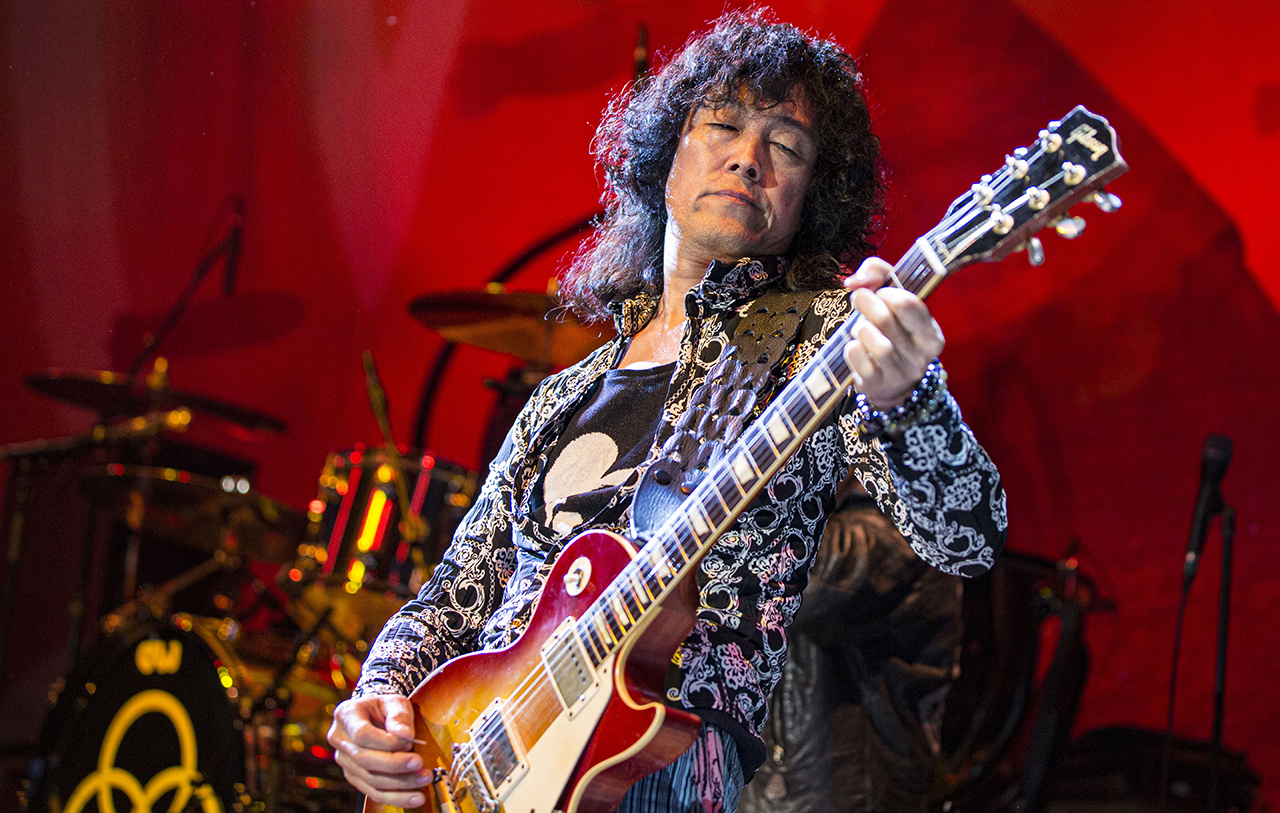
While Page will forever be associated with Gibson, and to a lesser extent Fender and Danelectro, Sakurai started out with Japanese ‘lawsuit era’ guitar maker, Tokai. “My first guitar was a Tokai when I was 17,” he says. “Back then, Gibson’s imported guitars were too expensive.
“And the Les Pauls available in Japan were shaped differently to the one Jimmy Page used. I was already detail-oriented by then; Tokai’s Les Paul was a very close copy. So I kept playing the Tokai until I was 30.
People might think studying studio versions is easier – but it’s not
“In 1993, I bought my first guitar from Gibson’s Custom Shop. From then on, I started to collect the other models like the Custom Double Neck EDS-1275. Now I have every single guitar Jimmy Page used in performances, including acoustics.”
He corrects himself: “Well, there is one exception – Jimmy’s ’79 Gibson RD custom model. I don’t have one yet since he only used it for one night only. But when the day comes for me to recreate that performance, of course, I will have to buy that model.”
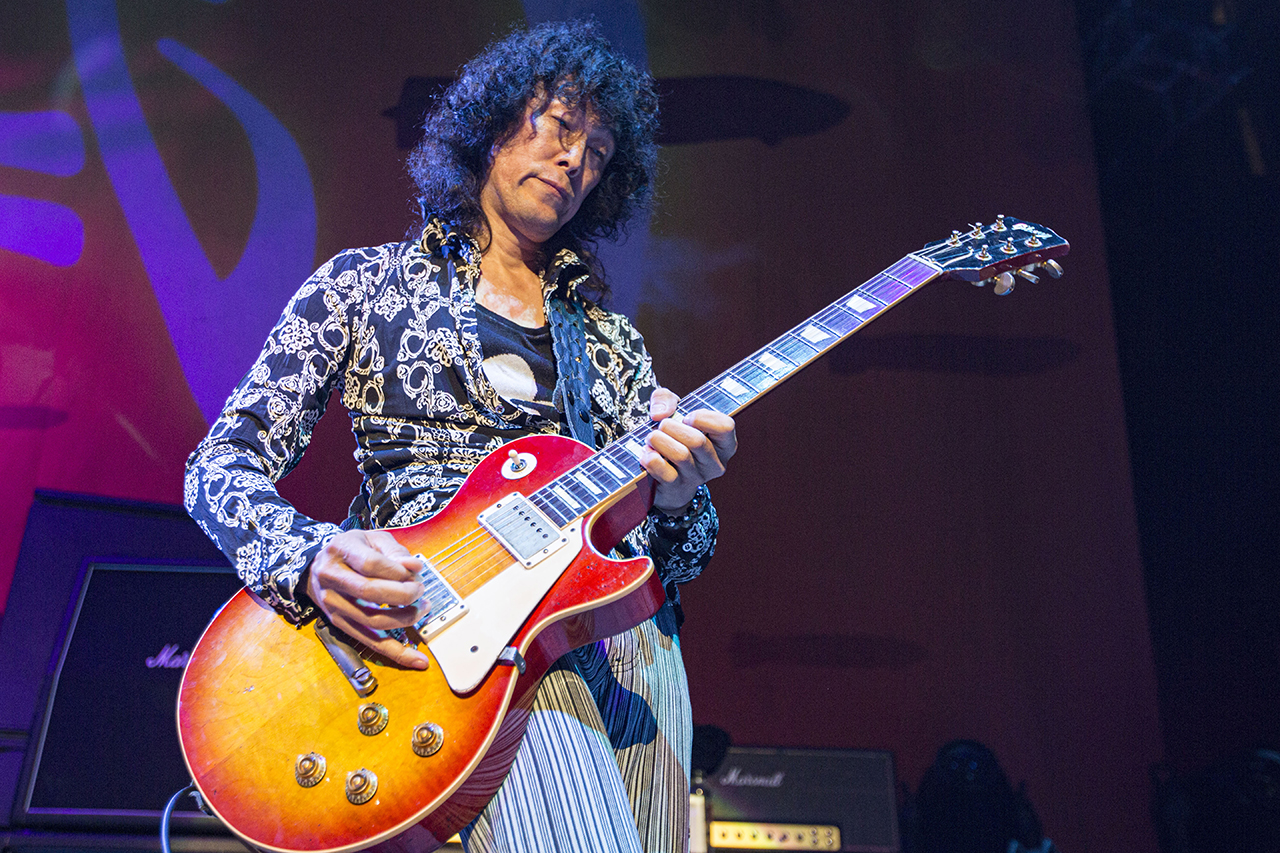
Creating such one-off performances isn’t easy, but it’s a big part of what Sakurai does. “People might think studying studio versions is easier – but it’s not,” he reveals. “I need to know which guitar, pickup, and amplifier Jimmy used. I need to know the control, vacuum tube, and speaker unit; was it original or was it replaced?
“Then there’s the mic; what kind was it? Where did he place it? How far was it from the speaker? And the mixing console – what kind was it? How about the mic amplifier? These elements make a huge difference in sound, and I need to master them all.”
Original PAFs that are 60 years old are precious, but not necessarily suitable
He admits it can be close to impossible to achieve. “You can’t study it unless you can deeply examine each element. You’d need to go to the exact studio and find the exact setup. Even if you asked members of Led Zeppelin, they may not remember everything. So unfortunately I don’t always get to know all that I’d like to.”
But Sakurai has nailed Page’s sound, recreating a style so distinctive that many resort to dismissing it, calling it ‘sloppy’ rather than admitting that they can’t do it. “I can’t know it all,” he repeats. “But I can guess and imagine string gauge and the nuances.
“Bending and vibrato directly correlate with the string size, so I experiment and find the right size that produces the exact sound. And because of the studying I’ve done I can make an educated guess on the things that can’t be solved.”
It helps that Page “tends to use the same gear in the studio as he used on stage” – apart from the ’59 Fender Telecaster used on Led Zeppelin, before moving to a Les Paul.
The Page sound is steeped in rock ’n’ roll lore, mostly represented by Number 1, the ’59 Burst he scored off Joe Walsh in ‘69, after spending much of the previous year playing the Dragon Tele gifted to him by Jeff Beck. Within Number 1 lay a set of PAFs that would become providing Page with oodles of tone to spare.
For his modern-day PAF needs, Sakurai relies on Shinji Kishimoto, the man behind Grinning Dog Pickups: “Kishimoto once told me, ‘Pickups are the gateway to rock ’n’ roll,’ and I agree. A pickup is like a mic; when you sing karaoke, it picks up your voice. And depending on the characteristics of the pickup, the sound you get varies.
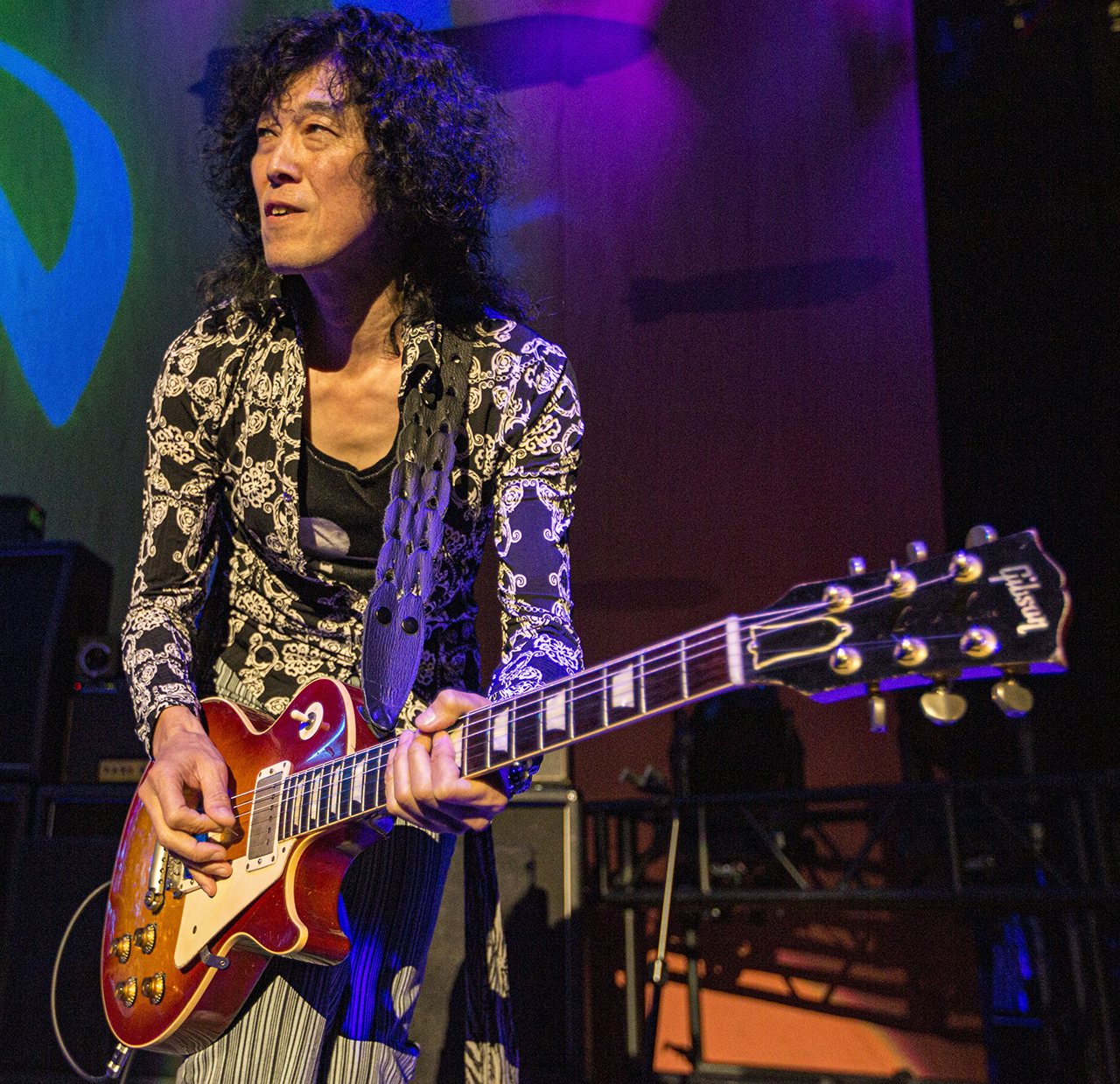
“If I’m trying to figure out Jimmy Page’s sound and use the wrong pickup, I’ll only get further away from what I’m trying to achieve. It's like painting. You’re using this blue color from a specific brand; every time you use it you get the same result. But if you got blue paint from another brand, the result would be different. That’s why pickups are so important.”
So what makes Grinning Dog Pickups his preference? “Original PAFs that are 60 years old are precious, but not necessarily suitable for the Jimmy Page sound,” Sakurai explains. “The original PAFs were made from ’57 through ’60. They were made by human hands one by one, so each pickup is slightly different.
I would like to ask Jimmy how he got his tone during the 1973 Madison Square Garden shows. The tone is impossible
“Gibson does have pickups based on original PAFs, and I’ve tried them, but they were too powerful. I prefer using the custom pickups Kishimoto makes for me, based on my requests.”
Of course, there’s always more to learn. "I would like to ask Jimmy Page – if I see him again – how did he get his tone during the 1973 Madison Square Garden shows? That fuzzy tone is impossible; it doesn’t make sense. We all know he used a Marshall, but was it modified with some kind of special circuit? What kind of vacuum tube did he use?
“To me, this journey is the very essence of getting to know Jimmy Page and Led Zeppelin. It’s all very mysterious; it’s why fans are still crazy about them after many decades. What Led Zeppelin made wasn’t easily made; Led Zeppelin is a miracle. It’s why some people who want to ‘be them’ eventually give up. I’m don’t give up.”
Sakurai believes that learning about the artist’s background is as essential as the secrets of their output. “Where he grew up and what he saw growing up; studying these kinds of things helps to dig deeper in finding the origins of the music,” he says.
“When I visited England I went to his hometown [Heston, Middlesex]. I’d walk the streets that he walked and breathed in the air he breathed. I’d think, ‘He must have used these stations; he must have grown up looking at that clock tower.’
“I even noticed the smell when it rained. These things are crucial – they influence music. Jimmy Page reveals some of them in his interviews, but he doesn’t tell it all!”
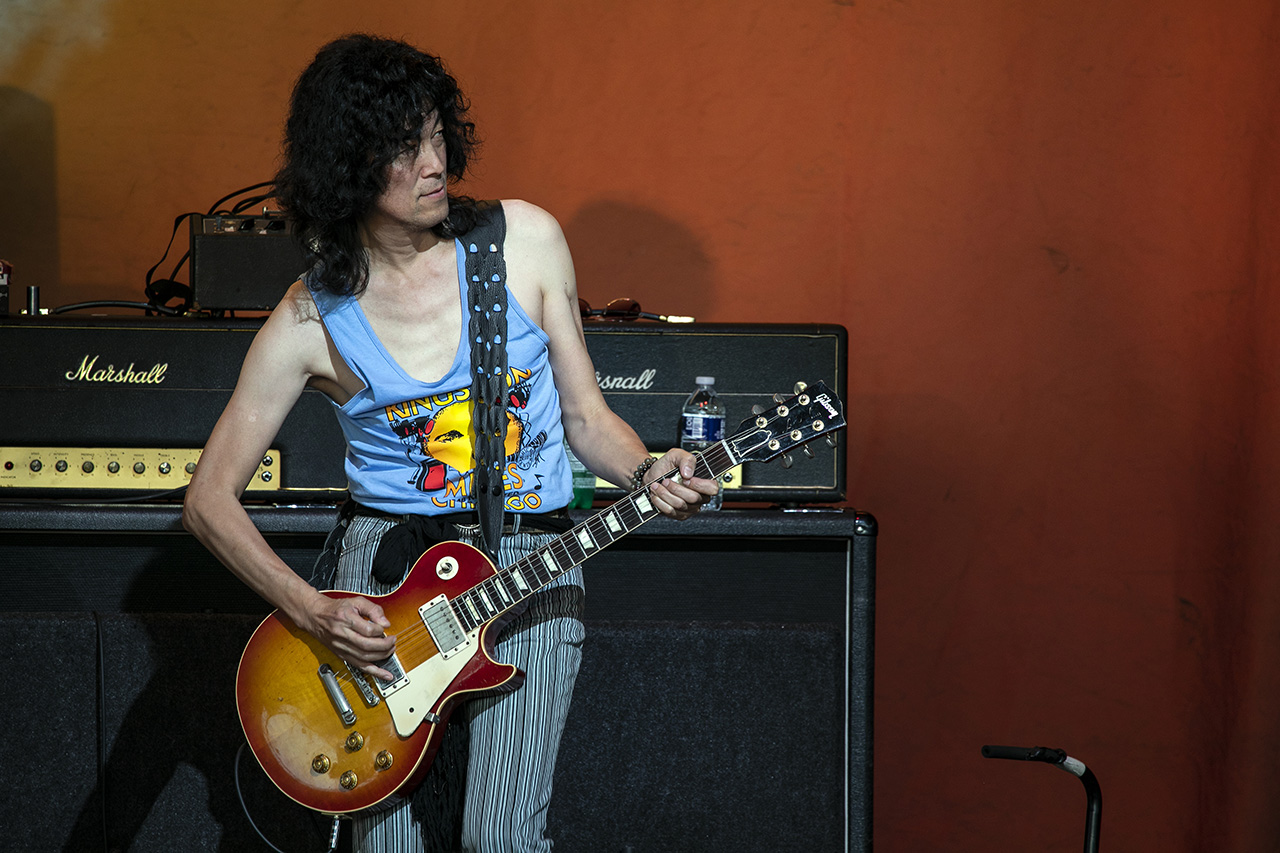
Sakurai is starting to look beyond Led Zeppelin, integrating Page’s work in the ’80s and ’90s into the mix: “I have already studied and performed Coverdale/Page, The Firm and Jimmy’s solo work. I have a connection with Chris Slade and Tony Franklin [of The Firm], and I’ve performed with them. I plan to do a tribute to The Firm in the future.”
Anyone who’s seen him in action knows why Jason Bonham invited him to join his outstanding Led Zeppelin Evening shows – but despite moments like those, and the movie, Sakurai reveals: “I’m humbled by my success and accomplishments, but I am my toughest critic.
I can’t feel more joy than when I’m trying to get closer to the sounds that Led Zeppelin made
“From my eyes and ears, I think I have a long way to go. Only sometimes do I think I’m good, but… this journey is endless! And even if I was satisfied with what I do, one person didn’t create Led Zeppelin’s music. Jimmy Page, Robert Plant, John Bonham and John Paul Jones had the chemistry that gave birth to this music. My toughest mission left to do is to recreate that.”
He’s certain he won’t change his approach in the future. “Just today, I was listening to some Led Zeppelin in the car and I made a new discovery. It’s been 43 years since I started this journey, but I’m still finding new things.”
He concludes: “I have my challenges. I want to know the secrets of the pickups, who made the costumes, and how Jimmy felt in the costumes. I can’t feel more joy than when I’m trying to get closer to the sounds that Led Zeppelin made. To me, it’s the greatest part of life. It is the life.”
- Check out Jimmy Sakurai’s upcoming tour dates with Jason Bonham’s Led Zeppelin Evening at his website.







